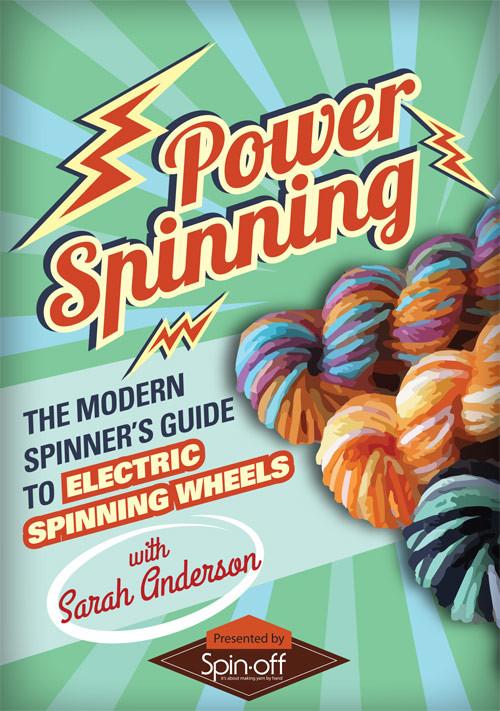Review of Power Spinning (video) from Sarah Anderson
reviewed by Sukrita Mahon
Electric spinning has been around for some decades now and is seeing a rise in popularity, particularly in the past ten years. Most spinners have their preferences based on their lifestyle, whether they opt for spindles, wheels, or e-spinners. The devices take up little space, can be reasonably affordable, and are capable of making any kind of yarn. There don’t seem to be any downsides, other than simply lacking the “feel” of treadling or spindling.
Accessibility makes electric spinning very attractive: spinning on a wheel or spindle can be taxing to the body in all kinds of ways that don’t happen on an e-spinner. For people with mobility issues, it can make a huge difference in being able to focus on the spinning itself. I’ve even known people who love to take them on road trips, spinning in the passenger seat or in the back of a caravan, where wheels or spindles may be impractical. An advantage that particularly appeals to me is that there is no need to worry about wheel ratios; any kind of yarn is doable with the turn of a knob.
It’s interesting then to note that so few resources are available about e-spinning; no major books have yet been released about it. Part of the reason could be that there is just little to say that hasn’t been covered in other books, but I’m not sure.
About the length of a Hollywood movie, Power Spinning by Sarah Anderson is set in a craft room, with yarn and knits furnishing the walls. Sarah is seated on a small table with an electric wheel and guides us throughout the video.
The first third or so is dedicated to a general understanding of the components and varieties. Next she talks about the actual spinning, which is explained clearly – beneficial for those who may need the instruction. There is a portion about making slub yarn that I enjoyed. Sarah is a good teacher and makes sure to explain what to expect and look for at each step while making the yarn. She demonstrates spinning woollen yarn in different fibres, including cotton, which could be useful to some. However, this video, while very informative, is lacking subtitles or transcripts, which could be an issue for some viewers.
Personally, as someone who has been spinning for a while, I didn’t learn much from the video. I tried electric spinning briefly at a local guild and found it quite intuitive, so to my mind, a guide wasn’t necessary. Ravelry forums were mentioned a fair bit, which makes me wonder if all the relevant information is already available for free online. I have to admit that I found it a little tedious in parts, to the extent that the poor editing made me rewind in amusement.
For someone just starting out though, who is interested in giving spinning a try for the first time, this provides a great resource with lots of advice and tips. As self-taught beginners, spinners end up watching quite a lot of video content, but I’ve found that it’s all useful in subtle ways.
2/5
Did you know we also have a monthly PLY newsletter? Sign up here!
PLY Magazine believes that Black lives matter, as well as LBGTQI+ lives. Those most vulnerable and persecuted in our communities deserve our love and support. Please be good to each other.




Leave a Reply
Want to join the discussion?Feel free to contribute!